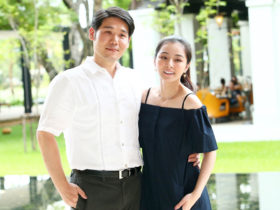
商用電郵大多以客套話為開首,而客套話其中一種通用的做法,就是首先針對雙方的關係答謝。
Pleasantries(客套話):無論是B2B(Business-to-business) 或是B2C (Business-to-consumer) ,商用電郵首部分不是要說出主題,而是表達感謝,當然這部分也不宜過長。一、兩句客套話便足夠了。商業電郵跟普通電郵不同之處,是後者一向注重簡約及到點。
1. IT’S A PLEASURE:
- 例如:Mr. X, it has been a pleasure of ours to have you as our esteemed client.
- 例如:Ms. X, it has been a distinct pleasure to have you on board.
保持客氣而得體態度
2. THANK YOU:
- 例如:I would like to thank you personally for your continued patronage(惠顧).
- 例如:We would like to extend our sincerest thanks for your support.
- 例如:Thank you once again for taking the time to review our email.
Main points(主要內容)無論是商業信件或是個人信件,均一定要明確地道出想表達的內容。因此,建議將主要內容放置在信件的第二段,跟客套話分開。主要內容要簡約,語氣亦要保持客氣。
3. THE FIRST THING I WOULD LIKE TO BRING TO YOUR ATTENTION IS:
- 例如:The first thing I would like to bring to your attention is the matter of our upcoming campaign. Here are the details…
4. AS A WARM REMINDER, PLEASE KINDLY NOTE:
- 例如:As a warm reminder, please ……
Call to action(信後的行動):無論你商用電郵的目的是sales/marketing或者告知,信件裏面亦應該明確地指示對方之後的course of action(行動方針)。如果電郵是關於sales/marketing的,你會否提供一個途徑,邀請他們訂閱你們的服務?如果這個電郵是關於某些邀請目的,那麼信件一定要寫明需要他們回覆。
在現今的電子社會文化,如果電郵裏面沒有清楚地說明信後的行動,一般來說,收信者都不會作出任何follow up(跟進)。以下有幾個客氣的例子。
DIRECT(直接的做法):
5.WE KINDLY REQUEST THAT YOU:
- 例如:We kindly request that you would subscribe to our service. You may do so through clicking this link right here: www.example.com. Thank you for your attention.
- 例如:As a kind request, please fill out the attached questionnaire and submit your response before April XX, 2020. Thank you。
INDIRECT(婉轉的做法):
6. WE HOPE THAT YOU WOULD CONSIDER:
- 例如:We hope that you would consider contacting Mr./Ms. X to arrange a session soon at your convenience.
- 例如:It is our hope that you would consider offering your support by subscribing to our service by signing up here: www.example.com.











